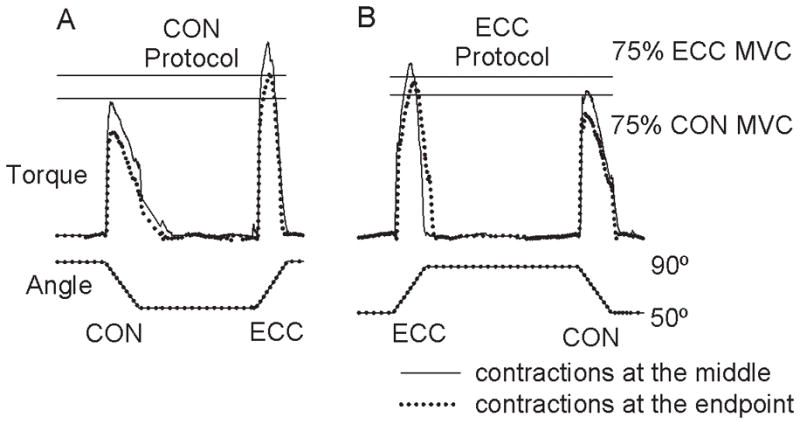Figure 1.

Representative data recorded during concentric (A) and eccentric (B) fatigue protocols. From the top, knee extension torque and knee angle are shown. The two horizontal lines “75% ECC MVC” and “75% CON MVC” are the target lines used in the protocols, each of which corresponds to 75% of pre-fatigue eccentric and concentric MVC torques, respectively. The solid and dotted torque lines indicate the torque recorded at the middle and end of the fatigue protocols. In the CON protocol (A), the subject performed repetitive, fatiguing 75% CON MVCs with single ECC MVCs performed periodically (only 1 for each is shown). The protocol was continued if the ECC MVCs exceeded the target torque, and this was the case even after the subject was not able to reach the target torque concentrically (the dotted line on the left). Similarly, in the ECC protocol (B), the subject performed 75% ECC contractions until the eccentric contraction torque fell to the 75% ECC MVC line (ECC contraction with a dotted line). After this contraction, one maximal concentric contraction (CON contraction with a dotted line) was recorded.
